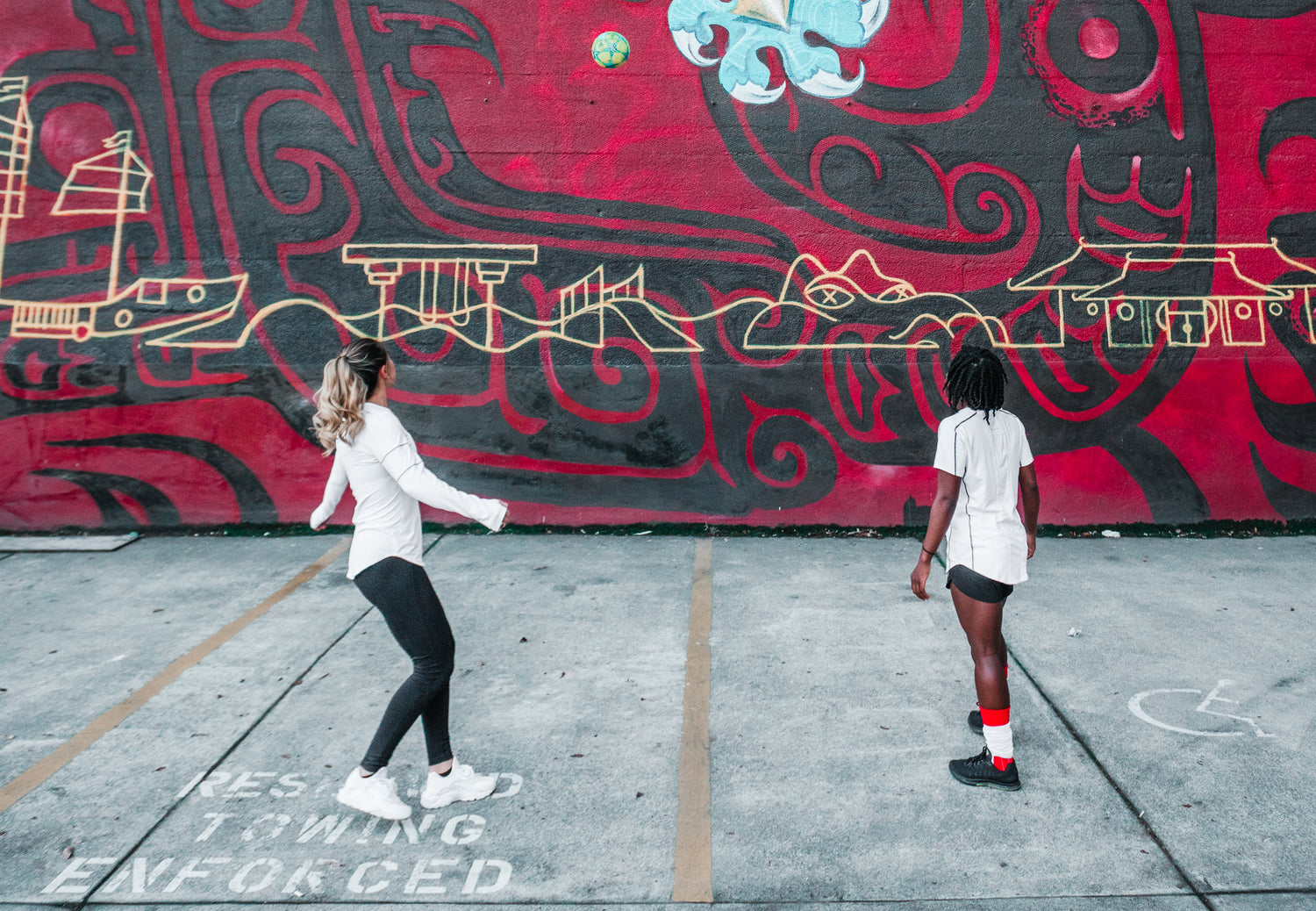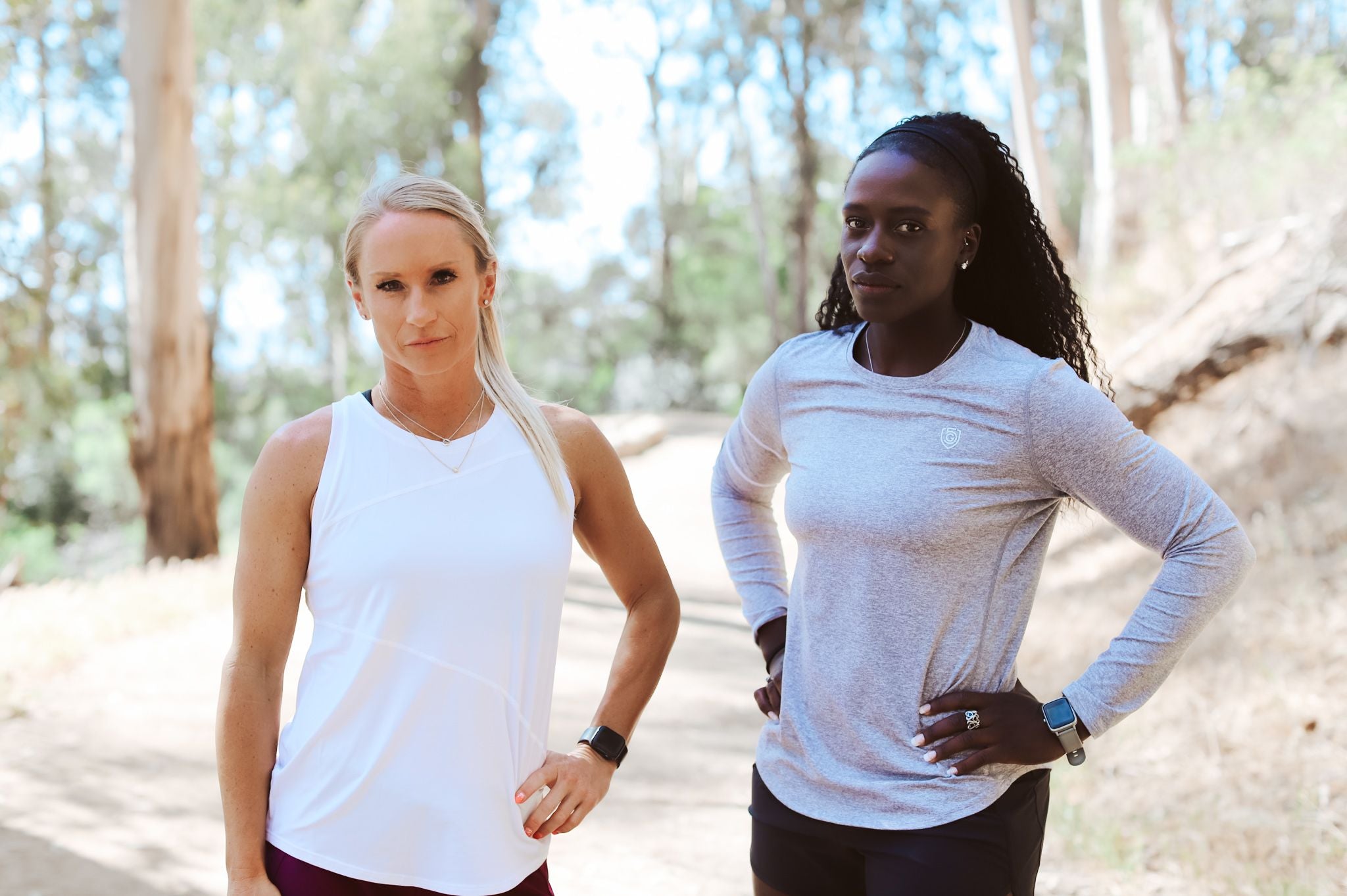7 Causes of Gender Inequality in Sports
The sports world is a completely different place for women than it is for men. This contrast applies to sports at all levels — from women in power at the top of the sports industry and pro athletes, to amateurs, college-level players, and young girls.
This leaves so many women and girls in sports wondering, why? What is gender imbalance in sports and where did it all come from?
Gender Inequality in Sports: Here's What's Happening
Yes — men’s and women’s sports are different because men and women are different.
But physical differences don’t account for the massive scope of gender inequality in athletics that persists even when women work just as hard or achieve more than the men in their field.
When we delve deeper and examine how gender inequality in sports really functions, its systemic nature appears.
The underrepresentation of women in sports leadership, the gender gaps in athletes’ pay, and the differences in funding, opportunities, and support for female athletes accumulate into a troubling domino effect.
We should all be concerned that, compared to boys, girls are almost twice as likely to drop out of sports by age 14. For many girls, participating in sports is the best path toward health improvements, interpersonal skills, greater social equality, and confidence.
For current and upcoming generations of female athletes, let’s get to the bottom of why gender inequality still impacts sports.
7 Causes of Gender Inequality in Sports: Why & How
What are some of the causes of gender inequality in sports?
1. Power
There isn’t a proportionate number of women with access to power in the sports industry.
The most important decisions in any industry happen from the top down. A sports world that treats women and girls equally is therefore synonymous with a sports world that represents women equally in power and influence.
- Women make up only 18% of qualified coaches, 9% of senior coaches, and less than 25% of the governing boards of almost half of publicly-funded national sports governing bodies.
- As of 2016, less than 30% of Olympic governing bodies, 16.6% of National Olympic Committees, and 18% of international Sports Federations were women.
2. Pay
Many athletes receive income from the organization they play for, but corporate sponsorships are another major source of income for successful athletes. When considering both forms of compensation, women athletes get short-changed.
The gender pay gap is a problem because young women and girls deserve the chance to aspire to sports as a career to the same degree that boys and young men do. Of course, it’s harder to pursue dreams of going pro in a sport when your hard work is unlikely to pay off in the same way it would if you were male.
- Depending on the sport, the average professional woman athlete is paid a small fraction of her male counterpart. Tennis is a relatively promising example, where the average female athlete makes 84% of the average male athlete’s pay.
- Women’s sports get an estimated 0.4% of total corporate sponsorships.
- The WNBA recently resolved a situation where they were paying players 23% of their revenue, whereas NBA players earned half of their league’s revenue.
3. Marketing and Promotion
In the face of criticism toward the gender pay gap in sports, some athletic organizations have pointed to women athletes bringing in less revenue, though they still pay women lower percentages of said revenue. This argument only reveals the underlying gender gap in the way organizations market and promote women’s sports.
The discrepancy in marketing and promotion translates to smaller and less enthusiastic followings, fewer sponsorships, fewer profits, and ultimately lower pay.
- Washington Mystics’ Elene Delle Donne observed, “We absolutely do not get promoted as our male counterparts do. When you put millions of dollars into marketing athletes and allowing fans to get to know a player, they develop a connection with someone.”
- Official WNBA Jerseys are extremely hard to come by — even fans of WNBA Finals MVP Kahleah Copper couldn’t find her jersey online to purchase.
- Marketing for women in sports is sometimes over-sexualized, which understandably alienates female fans.
4. Media Coverage
Media coverage of women’s sports is often minimal, even when women athletes’ accomplishments outshine male athletes. Even worse, media portrayals of female athletes often focus on their outer appearance or sexualize them.
Those mentalities that originate from the sexist portrayal of women can harm young athletes’ performance and personal fulfillment in sports and make them more likely to drop out. What young girls in sports need is access to inspiring role models to celebrate for their excellence.
Acknowledging and celebrating women’s sports is key to driving widespread engagement, fandom, and participation.
- Women comprise about 40% of athletes, but women’s sports make up 4% of sports media coverage.
- Though viewers can identify when broadcasting underrepresents female athletes, news staff may be unaware of the imbalance in their coverage of women.
- Female athletes are considerably more likely than males to be sexualized in the media.
- 2021 was the first year the women’s NCAA tournament was on network TV. The fact that audiences have been growing steadily for women’s sports means it’s past time to give women’s athletics the attention they deserve.
5. Funding
In college sports, women’s athletic programs are often underfunded or underserviced compared to men’s sports.
Gender gaps in college funding for women’s sports can impact coaching, facilities, opportunities, promotional investment, and fan enthusiasm.
- Collegiate institutions spend 33% of scholarship budgets, 24% of athletic operating budgets, and 16% of recruitment budgets on women.
- College women’s team coaches earn 63% of what men’s college teams’ coaches earn.
6. Opportunities
One of the most basic imbalances is the gender inequality in sports opportunities.
Arguably even more impactful on women’s sports than adequate media exposure for high-level female athletes, pay incentives, and college funding, is girls and women simply getting the chance to play. Having opportunities to play sports in and of itself cultivates the positive impact of sports on girls’ lives and the lifelong passion that follows.
- 1.13 million fewer high school athletics opportunities exist for girls compared to boys.
- It took until 2020 to have the “first gender-equal [Olympic] games,” with 49% female participants.
7. Gender Stereotyping
Society overwhelmingly reinforces stereotypes to shape girls’ and boys’ feelings about sports as they grow up.
Girls are often subject to messaging that fails to encourage or altogether discourages equal participation in sports.
- Girls’ environments underemphasize motor skills and physical activity during formative years.
- Gender stereotyping works its way into the childhood toys that girls are expected to play with, the specific sports they’re pushed to join, and the media portrayals of women in sports to which girls are exposed.
What Is the Role of Sports in Gender Issues?
Participating in sports makes women and girls healthier physically and mentally, and lowers serious disease risks. Young women in sports also experience improved reproductive health, engage in less drug use, and have lower rates of gender-specific health problems.
The agency, empowerment, social integration, and personal development women and girls gain from sports are equally impactful.
The Solution: Fixing Gender Inequality in Sports
Though plenty of us are actively pushing for change in the sports arena, balancing the scales in power, investment, representation, and opportunity won’t happen overnight.
These changes won’t happen by themselves, either. Social media has become a powerful tool to help women in sports push for change and gradually democratize the sports industry. Through social media, women in sports have a direct line to the public to take control of their marketing, promotion, sponsorships, and public image while speaking their minds, raising awareness, and becoming role models. It has also contributed to the increased media coverage of women’s sports that we are starting to see by granting visibility to women’s sports fans who take to the platform to expose inequities and celebrate female athletics. Additionally, there have been hundreds of gender inequality in sports articles written in the past few years that aim to help raise awareness
Encouragingly, all of us can join the charge and find ways to elevate female athletes of all ages in our own spheres and beyond.
How have sports positively impacted your life?
Tell us your story on Instagram @goalfive and share what athletics has added to your life’s journey.
We know there’s no shortage of girls and women who have flourished due to casual, intramural, school, college, amateur, or professional sports.
That’s why we’re on a mission to share sports and their transformative impact on health,, social equality, and inner fulfillment with more girls around the world. Consider joining our equal play advocacy to help us make a difference.




3 comments
Viv
I really liked this article! I am in 7th grade, and I am doing a project on how women are segregated from many sports. This site was so helpful! I have never really done sports, I do ballet, but my brother does football, and a lot of times he is always bragging about how strong he is, but I always beat him at everything! I love knowing that there are people getting others aware of this!
Michael Imfeld
Gender segregation in sports was based on the assumption that persons with male dna have an advantage that people with female dna lack. Being born in 1950, when I was growing up, people took it for granted that boys in general would be bigger and stronger than girls in general. It was considered obvious that boys had a physical advantage over girls and that’s why sports teams were separated on the basis of gender. Now that that rationale is not as universally accepted, other factors may be considered. Still, all other factors being considered equal, which assumption these days is not so readily accepted, other factors may need to be considered in determining how the genders may fairly compete. I suspect that the issue of gender advantage may need to consider additional factors in determining how to equalize how to determine what is a fair matchup if todays men and women compete against each other.
grace drabek
Loved reading this article! I am a current student at Michigan State University doing a project on the underrepresentation of women in sports and this was very useful. I have been surrounded by sports all my life, from playing soccer in the third grade to now playing water polo at MSU! Need more women in sports!
Leave a comment
This site is protected by hCaptcha and the hCaptcha Privacy Policy and Terms of Service apply.